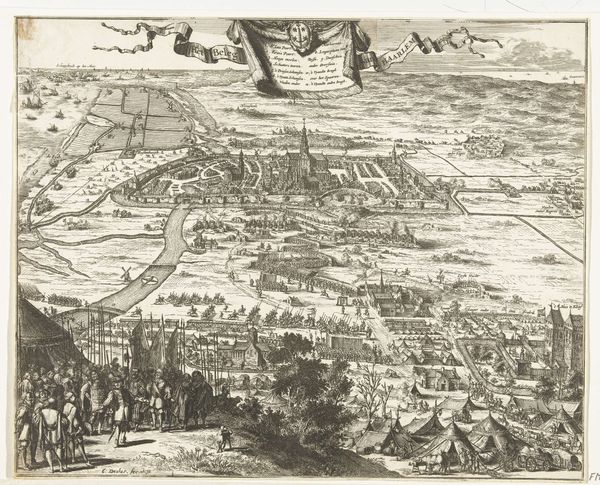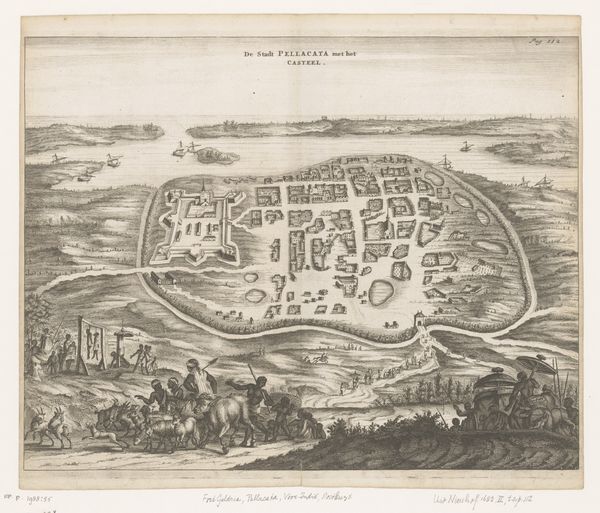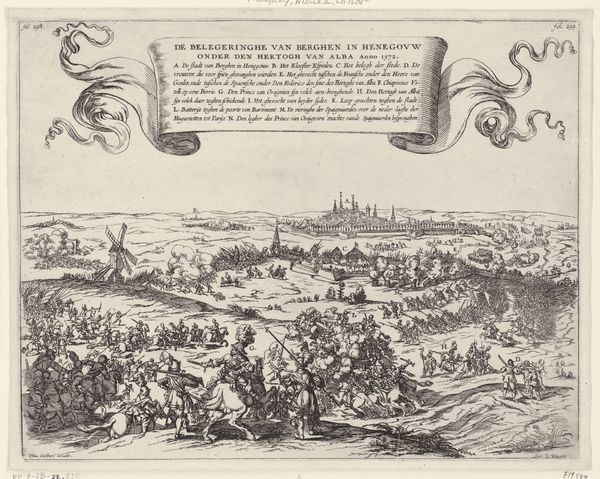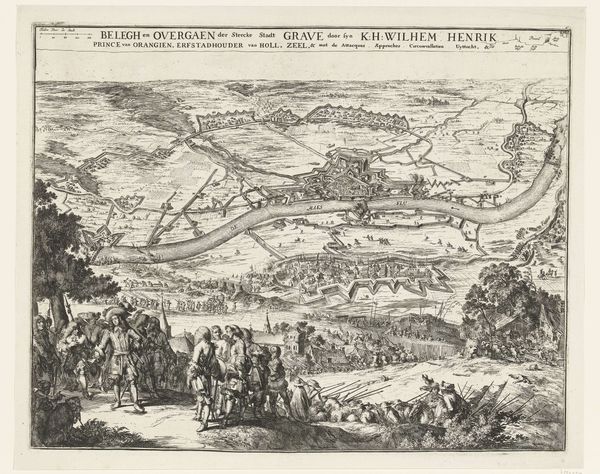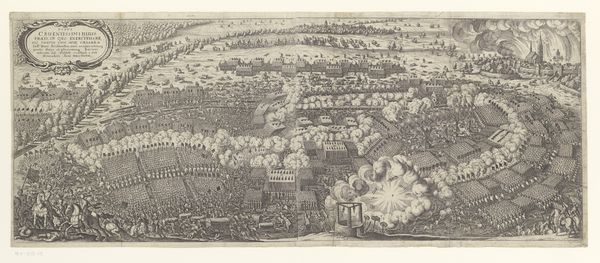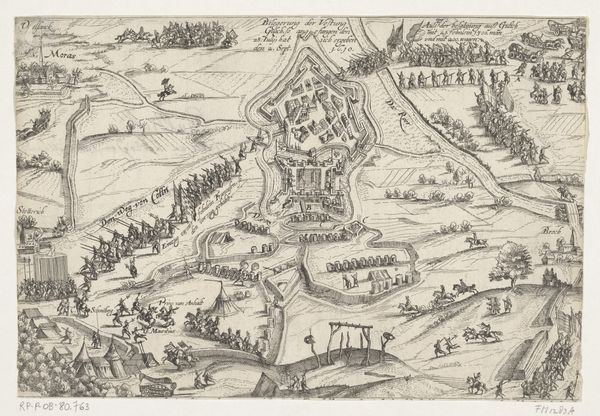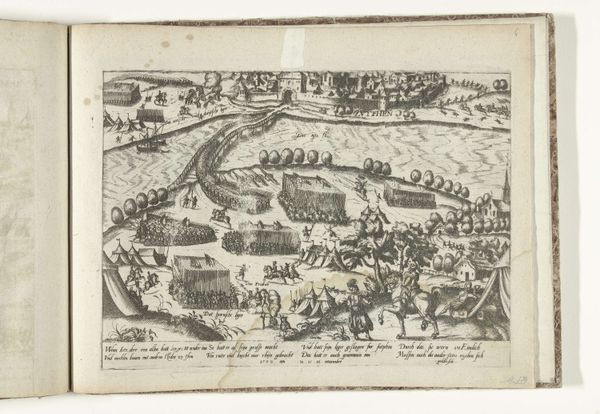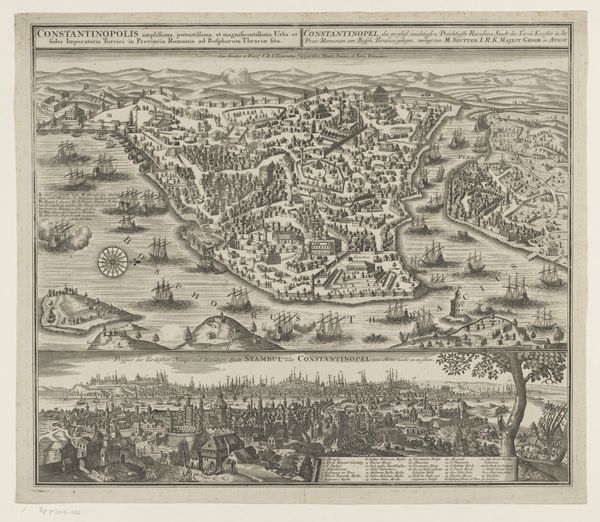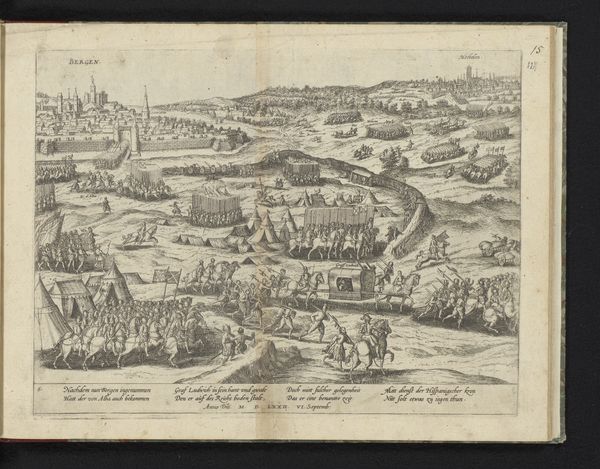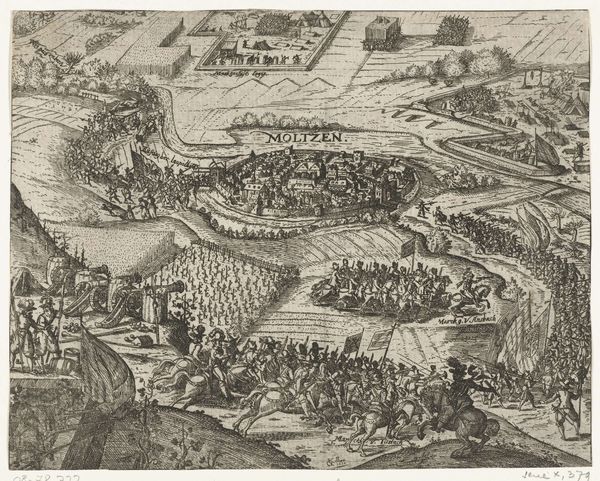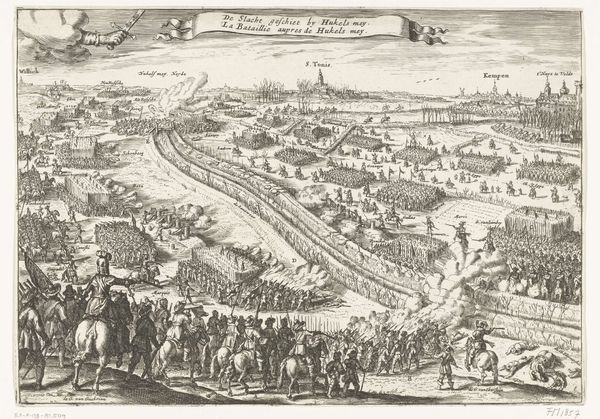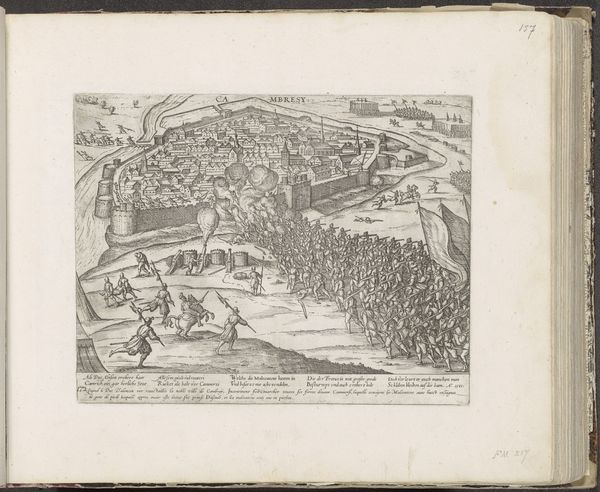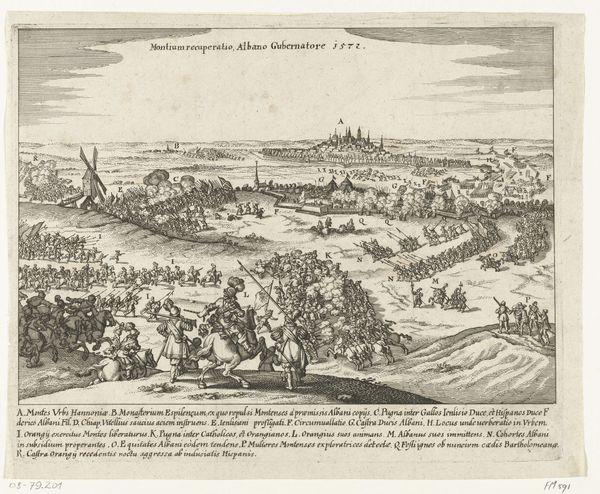
print, engraving
#
narrative-art
#
baroque
#
pen drawing
#
dutch-golden-age
# print
#
landscape
#
line
#
cityscape
#
history-painting
#
engraving
Dimensions: height 184 mm, width 292 mm
Copyright: Rijks Museum: Open Domain
Curator: Here we have an engraving from 1674-75 titled “Beleg en verovering van Grave door Willem III,” or "Siege and conquest of Grave by William III." It's attributed to an anonymous artist from the Dutch Golden Age. Editor: My first impression is how intricately rendered this city is—the detail is amazing considering this is a print! You can see the layout of Grave along the river Meuse. Curator: Absolutely. It’s a fantastic example of narrative art and landscape used for political purposes. The engraving depicts the siege of Grave, a significant event during the Franco-Dutch War, showing William III’s military strategy and eventual victory. We need to remember that during this time, printmaking was key for political messaging. Editor: Right, the materials are interesting too. Consider the engraver: the labour involved, and the printing process for creating these kinds of images intended for a wider circulation. Prints allowed people to be more informed about political events, constructing shared identity. Curator: And consider the effect on viewers at the time! It solidifies William’s image as a strong, capable leader defending the Dutch Republic against French aggression. The cityscape as a tool to showcase power... fascinating. It is a narrative crafted to influence public opinion, embedded in nationalistic sentiment. Editor: I'm struck by the detail in the foreground too, compared to the tiny renderings of soldiers in the background. The materials tell a story. Engravings, given their ability to create multiple images, provided an accessible means of distributing pro-Dutch propaganda throughout society. It shaped public perception. Curator: Propaganda, exactly! And what’s equally compelling is how this reflects and reinforces existing social structures and power dynamics. Whose stories get told and how? Who is seen and unseen in this carefully constructed scene? Editor: Indeed. Examining this through the lens of production gives you so much to consider about labour, and how its use reinforces Dutch national identity. It truly provides an insight into both material practices and social realities. Curator: It shifts how we engage with the image from simply a historical record to a crafted statement on power and identity during a turbulent era. Editor: Well, it shows how analyzing an image materially is just the starting point for really exploring ideas and context.
Comments
No comments
Be the first to comment and join the conversation on the ultimate creative platform.
